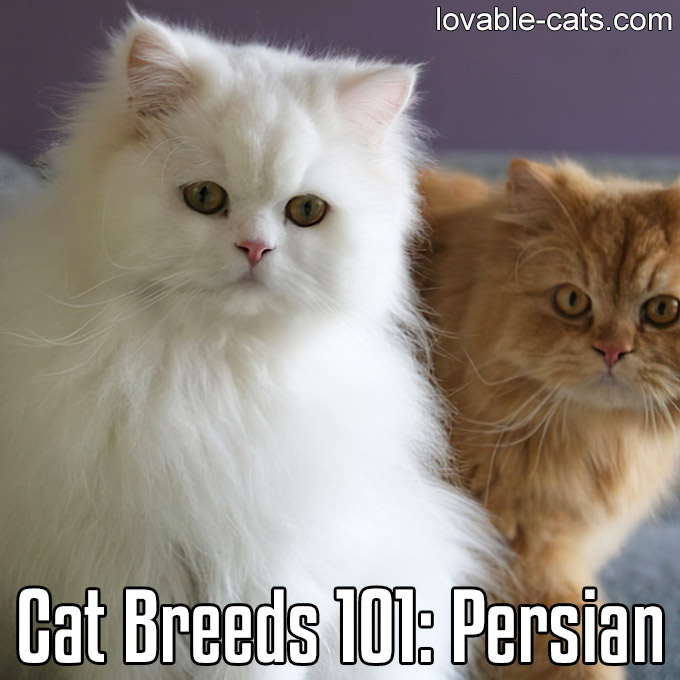
Cat Breeds 101: Persian – Image To Repin / Share
Photo: Wikipedia – lic. under CC 3.0
Considered as one of the world’s oldest and most enduringly popular feline breeds, Persian cats are of course believed to have originated from Persia, which is now known as Iran. These glamorous cats are often loved and endeared by fanciers because of their long flowing coats, which come in varying colors.
The current breed of Persian cats, which are also called “Doll Face Persians”, is believed to be the descendants of the Traditional Persians. During the 1500’s, the breed was introduced by the Romans and the Phoenicians to Europe. Not long after, the Europeans began raising this breed because of its long and silky coat.
Today, Persians are considered as the most popular breed of cats in the United States. Meanwhile, the breed lost its position to the British Shorthairs as the most popular breed of cats in the United Kingdom in 2001. Eleven years later, the breed was ranked as the sixth most popular in the UK. From 2003 to 2007, the total number of registrations has significantly declined in France. [1]
Persian cats are generally considered as strong, because of their excellent muscles and boning structure. The breed’s round face normally reflects a happy and pleasant expression. They also have large and expressive eyes. [2]
In general, Persian cats are known to be well-balanced both in terms of physical bodies and temperament. They come in medium to large sizes, with shorter yet muscular bodies. Female Persians are often smaller than their male counterparts.
The most common coat colors for this breed include tortie point Himalayan, blue point, sea point, and flame point. Some breeds also appear in calico, black-white, and shaded silver color coats. They usually come in full volume due to their dense undercoats. Furthermore, the CFA revealed that the breed is divided into seven color divisions for competition purposes. These color divisions include solid, silver, smoke, tabby, parti-color, bicolor, and Himalayan.
Persians are well noted for their impressive level of intelligence which makes them excel in show rings. Instead of their melodious voice, these cats use their large expressive eyes in communicating with their owners. They are usually playful but they never demand for their owner’s time and attention. [3]
These cats are known for their sweet and gentle nature which makes them excellent companions at home. They are the type of cats that prefer staying in a calm environment. They love to be handled and carried by their owners. They can blend well with children at home, however, they refuse to join in noisy and loud games. Unlike other cats, Persians do not prefer dwelling on perches because they feel more secure when they are on the ground.
In terms of grooming, the coats of this breed need to be combed regularly to prevent tangles which may subsequently contribute to matting. Regular combing also helps in removing loose hairs thus, preventing hairballs from occurring. On the other hand, they may love getting a bath, once they get used to it. [4]
With regards their health, some Persian cats suffer from a condition known as polycystic kidney disease. Most cats only develop chronic renal failure when they reach adulthood. [5]
References:
[1] https://en.wikipedia.org/wiki/Persian_cat
[2] https://www.tica.org/members/publications/standards/ps.pdf
[3] https://www.tica.org/public/breeds/ps/intro.php
[4] https://www.cfainc.org/Breeds/BreedsKthruR/Persian.aspx
[5] https://link.springer.com/article/10.1007%2Fs00580-008-0744-0
